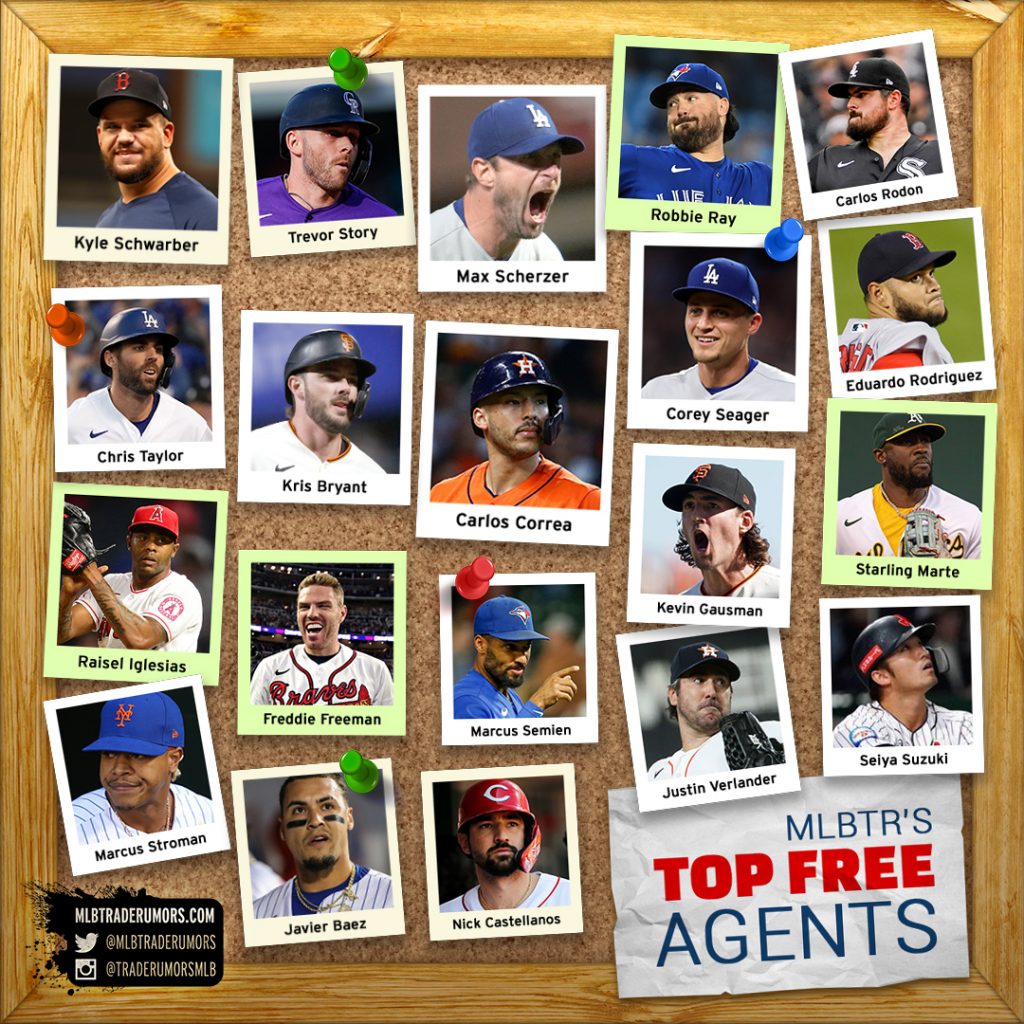As teams plan out their post-lockout needs, most are probably looking to the bullpen as an area that could use further help. With the number of relievers clubs deploy throughout a season, essentially all of them could be well-served to stockpile depth in the middle innings.
The most straightforward path to doing that is via free agency, and there are still a number of options from which to choose. Using MLBTR’s free agent list, we find 58 available arms who tossed at least 20 innings of relief last season. Some, like longtime Dodgers closer Kenley Jansen, are notable enough to command a significant multi-year guarantee. Many others figure to settle for one-year deals with a low base salary or perhaps minor league contracts with a Spring Training invite.
Who should be priority targets coming out of the transactions freeze? As we did with rotation options last week, we’ll sort the remaining free agent relievers by various metrics of 2021 performance to identify some of the top arms. There are obviously other factors for teams to consider — quality of raw stuff, pre-2021 track record, the player’s injury history, etc. — but a brief snapshot on the top bullpen arms by last year’s performance should provide a decent starting point. (All figures cited, including league averages, are looking solely at pitchers’ outings as relievers).
ERA (league average — 4.17)
- Andrew Chafin (LHP), 1.83
- Collin McHugh (RHP), 1.90
- Jimmy Nelson (RHP), 1.98*
- Jesse Chavez (RHP), 2.03
- Kenley Jansen (RHP), 2.22
- Juan Minaya (RHP), 2.48
- Hunter Strickland (RHP), 2.61
- Ryan Tepera (RHP), 2.79
- Ross Detwiler (LHP), 2.82
- Joe Kelly (RHP), 2.86
Strikeout Rate (league average — 24%)
- Jimmy Nelson, 38%
- Heath Hembree (RHP), 34.2%
- Jake Diekman (LHP), 31.7%
- Brad Boxberger (RHP), 31.2%
- Kenley Jansen, 30.9%
- Ryan Tepera, 30.8%
- Collin McHugh, 30.1%
- Jesse Chavez, 29.5%
- Ross Detwiler, 28.2%
- Jeurys Familia (RHP), 27.5%
Strikeout/Walk Rate Differential (league average — 14.2 percentage points)
- Jimmy Nelson, 27.8 points
- Collin McHugh, 24.8 points
- Heath Hembree, 24.3 points
- Ryan Tepera, 22.9 points
- Jesse Chavez, 21.9 points
- Brad Boxberger, 21.8 points
- Ian Kennedy (RHP), 19.7 points
- Joe Kelly, 19.2 points
- Ross Detwiler, 19.1 points
- Jake Diekman, 18.7 points
Ground-ball Rate (league average — 43.1%)
- Joe Kelly, 58.9%
- Brandon Kintzler (RHP), 58.5%
- Archie Bradley (RHP), 55.7%
- Alex Colomé (RHP), 53.7%
- Juan Minaya, 53%
- Alex Claudio (LHP), 52%
- Jeurys Familia, 51%
- Steve Cishek (RHP), 49.7%
- Edgar Santana (RHP), 49.6%
- Robert Gsellman (RHP), 49.4%
FIP (league average — 4.17)
- Jesse Chavez, 1.75
- Jimmy Nelson, 1.82
- Collin McHugh, 2.29
- Ryan Tepera, 2.73
- Andrew Chafin, 2.98
- Joe Kelly, 3.08
- Kenley Jansen, 3.08
- Ross Detwiler, 3.28
- Conner Greene (RHP), 3.46
- Chris Martin (RHP), 3.47
Innings Pitched
- Yusmeiro Petit (RHP), 78
- Hansel Robles (RHP), 69
- Kenley Jansen, 69
- Andrew Chafin, 68 2/3
- Steve Cishek, 68 1/3
- Alex Colomé, 65
- Brad Hand, 64 2/3
- Brad Boxberger, 64 2/3
- Richard Rodríguez (RHP), 64 1/3
- Adam Ottavino (RHP), 62
* Nelson underwent season-ending elbow surgery last August; his health status for 2022 remains unclear.

